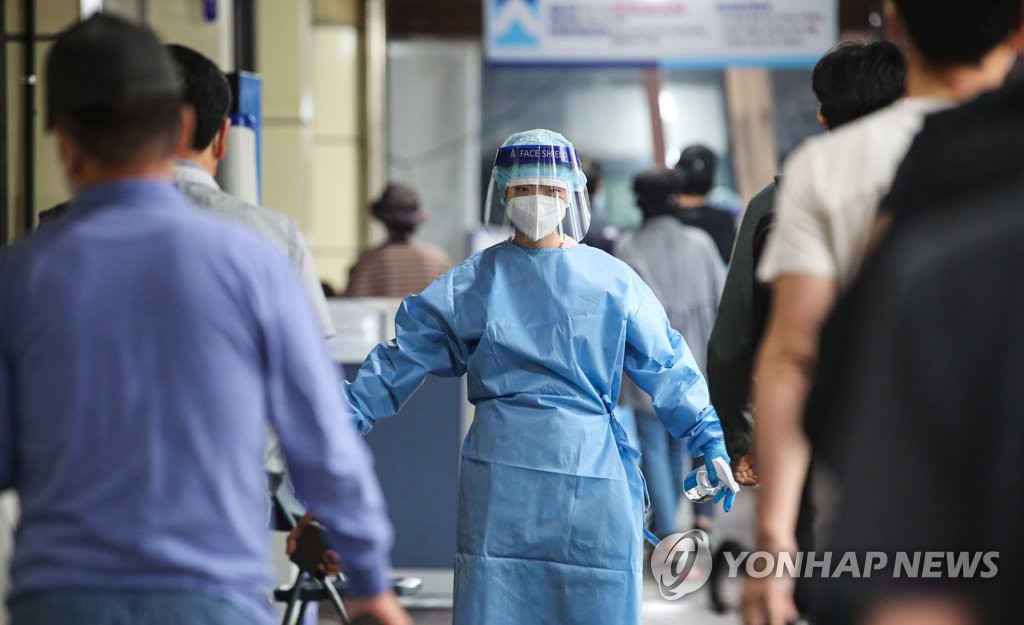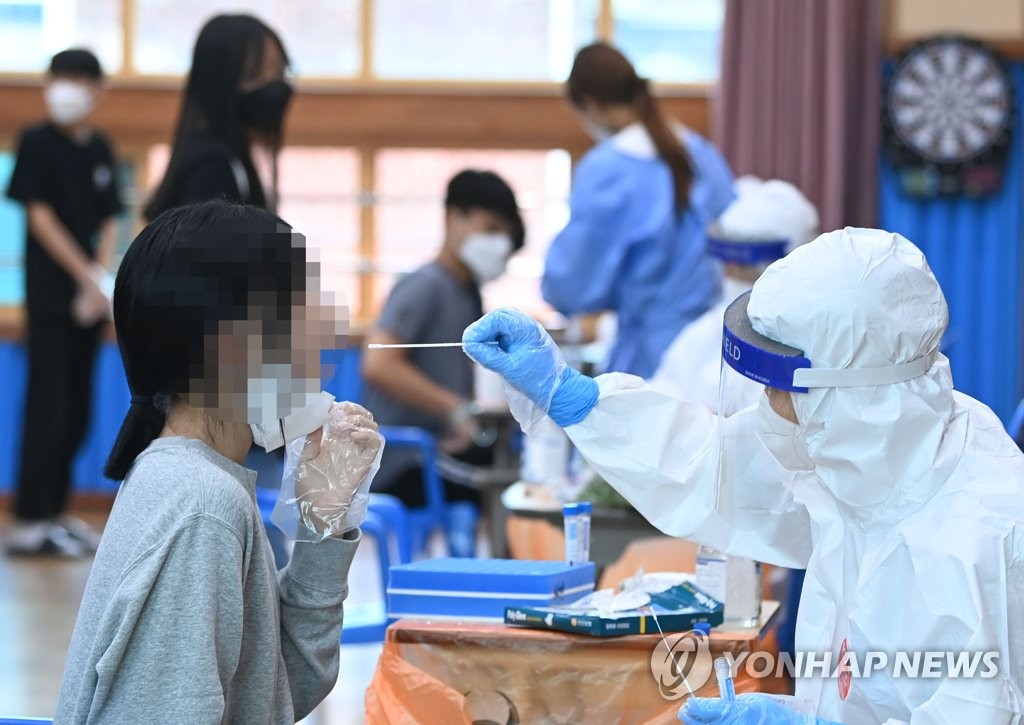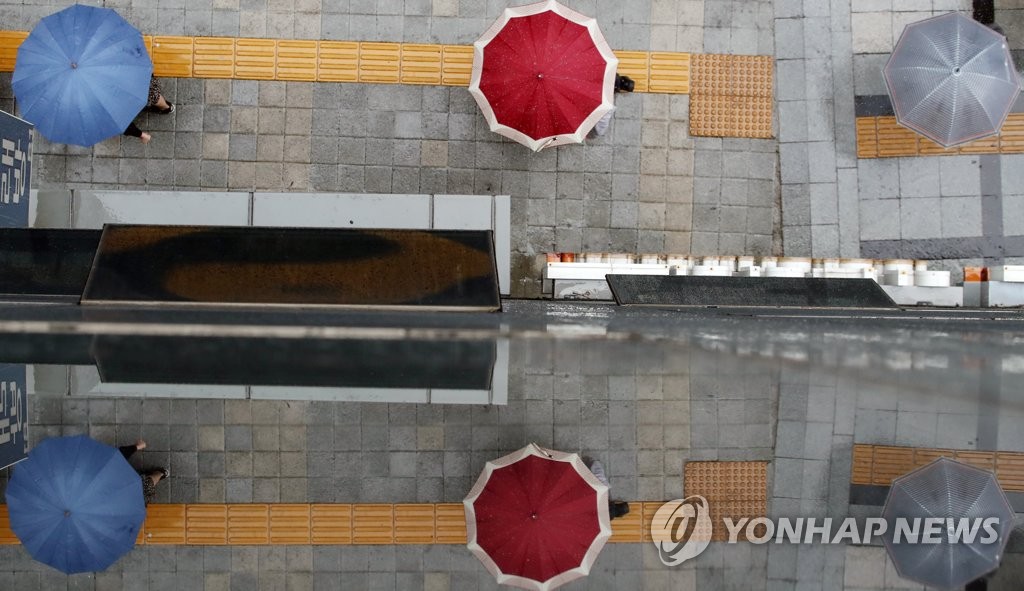- California Assembly OKs highest minimum wage in nation
- S. Korea unveils first graphic cigarette warnings
- US joins with South Korea, Japan in bid to deter North Korea
- LPGA golfer Chun In-gee finally back in action
- S. Korea won’t be top seed in final World Cup qualification round
- US men’s soccer misses 2nd straight Olympics
- US back on track in qualifying with 4-0 win over Guatemala
- High-intensity workout injuries spawn cottage industry
- CDC expands range of Zika mosquitoes into parts of Northeast
- Who knew? ‘The Walking Dead’ is helping families connect
New daily cases likely to exceed 2,000 again, infections surge in greater Seoul area
South Korea’s daily new coronavirus cases are expected to surpass 2,000 again Wednesday amid a resurgence in infections, especially in the greater Seoul area.
Health authorities and local governments reported 1,859 new cases as of 9 p.m., up 423 from the same time the previous day. Daily cases are counted until midnight and announced the following morning.
Among them, 650 were confirmed in Seoul, 620 in the surrounding province of Gyeonggi and 117 in Incheon, a port city just west of the capital.
The reported number of coronavirus patients usually falls over the weekend and rises later in the week as more people get tested. South Korea reported a record high of 2,221 on Aug. 11.
The government is struggling to curb the spread of the highly contagious delta variant nationwide.
The country added 1,597 more COVID-19 cases, including 1,563 local infections, throughout Monday, raising the total caseload to 263,374, according to the Korea Disease Control and Prevention Agency (KDCA).
The latest caseload marked the highest in the daily count announced on a Tuesday despite tough social distancing measures in place across the nation over the last two months.
It is up from 1,490 on Sunday and 1,375 on Monday, when new cases usually remain lower than other weekdays due to less testing over the weekend.
Daily cases have stayed in the four-digits for the last 63 days amid the fast rise of the more transmissible variants nationwide.
The country added three more deaths from COVID-19, raising the death toll to 2,330.



A medical worker wearing personal protective equipment guides people at a COVID-19 screening station in southern Seoul on Sept. 7, 2021. (Yonhap)
Health authorities remain cautious about the hike in new cases in the Seoul metropolitan area, which could spread across the nation when people travel during the fall harvest Chuseok holiday, set for Sept. 20-22.
Among the locally transmitted cases, 66.4 percent were from the Seoul metropolitan area, home to half of the nation’s population.
Although the number of additional cases slightly fell over the past week, those in the Seoul metropolitan area have continued rising over the past three weeks due to cluster infections in workplaces, schools and other multi-use facilities, authorities, said.
Ahead of the holiday, authorities decided to extend the current distancing measures — Level 4 in the greater Seoul area, which is the highest in the four-tier system, and Level 3 in other regions — for another four weeks through Oct. 3.
Despite the stringent curbs, some restrictions were eased to give leeway to vaccinated people and allow more students to take in-person classes to mitigate the prolonged pandemic’s impact on the local economy.
Under new guidelines, up to six people are allowed to gather in the capital area if they include at least two vaccinated people during the daytime and four after 6 p.m.
Restaurants and bars in the greater Seoul area are allowed to operate until 10 p.m., an hour later than the current restriction of 9 p.m.
The cap on in-person attendance was relaxed to allow more students to take offline classes to address widening education inequality amid the prolonged pandemic.
For skincare clinics, spas and massage parlors, which offer mask-off services, authorities said they will tighten quarantine regulations to prevent spread of the virus in the more vulnerable settings.
South Korea has so far identified 23,388 cases of variant infections, up 3,091 from a week earlier. Of the figure, the delta strain accounted for a whopping 19,951.
The country confirmed three cases of the lambda COVID-19 variant from a person from Argentina and two others who came in close contact with the patient.
Amid the looming spread of the lambda COVID-19 variant, the country last week decided to apply tougher measures on arrivals from Peru and Chile starting Friday, making them mandatory to go through a seven-day quarantine at designated facilities.
There were 3,855 breakthrough cases among 9.7 million people who were fully vaccinated, accounting for roughly 0.04 percent, the KDCA said.
Authorities urged people to continue to take precautions under the revised distancing scheme meant to flatten the virus curve and move a step closer to the government’s plan to adopt a new COVID-19 policy aimed at gradually going back to normal.
“There are possibilities of a virus resurgence, because schools expanded in-person classes, universities reopened and people have increased activities to prepare for the Chuseok holiday,” Vice Minister of Health and Welfare Kang Do-tae said in a virus response meeting. “If people let their guard loose and the virus resurges, the goal of recovering back to normal can be threatened.”
A total of 30.8 million people, or 60.1 percent of the country’s 52 million population, have received their first shots of COVID-19 vaccines as of 10:30 a.m., and 18.5 million people, or 36 percent, have been fully vaccinated, the KDCA said.
The country plans to provide at least one jab to 70 percent of the population by the end of September to create herd immunity in November.
As additional batches of Moderna and Pfizer vaccines are expected to arrive from Romania on Wednesday, authorities were optimistic about the vaccination goal before the Chuseok holiday.
Currently, those aged 18-49 are receiving their jabs, following inoculations on priority groups, including the elderly population and healthcare workers.
Of the newly confirmed domestic cases, 477 were from Seoul, 474 from the surrounding Gyeonggi Province and 87 from the western port city of Incheon.
Imported cases, which include South Korean nationals, came to 34.
The number of patients with serious symptoms across the country reached 364, up 6 from the previous day.
The total number of people released from quarantine after making full recoveries was 235,225, up 1,530 from a day earlier.











